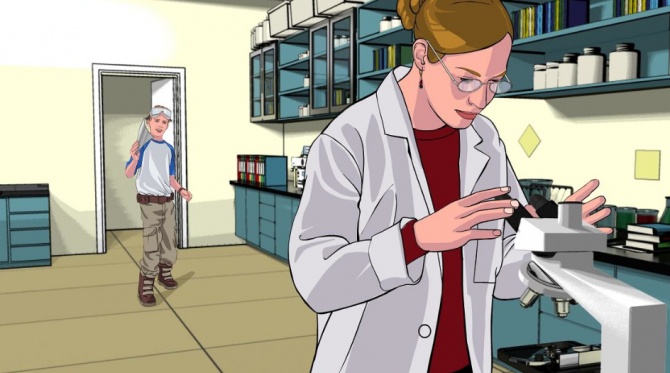20.109(F09): Mod 2 Day 2 Measuring system performance
Contents
Measuring System Performance
Introduction
Operation of System's Devices
The bacterial photography system we are studying modifies a natural signaling pathway in E. coli so that light striking the cell can be converted to a detectable output (β-galactosidase enzyme that works on a chromogenic substance).
2CS K+ and P+ activities
Black box abstraction
A “black box” depiction of the system looks like:
Some of the details within each box are:
This figure is more detailed but harder to decipher without prior understanding of several aspects of the system. For example, light at 660nm is detected by the input-sensing device, turning it off. Light-sensing requires the combined action of two sets of proteins: Cph8, itself a fusion of a light-sensing protein called Cph1 that comes from an algae attached to a transmembrane signaling protein called EnvZ, and phycobilin producing proteins that generate accessory pigments needed for the light-sensing protein to work. The input sensing device generates a signal within the cell’s osmoregulation pathway (OmpR is the signal carrier), changing the activity of an OmpR regulated promoter that is directing transcription of the output: lacZ….whew! The black boxes were a whole lot easier.
Today you will assess the system, both in terms of enzymatic activity measurements as well as the
Protocols
Be sure to retrieve your light and dark plates from the incubator and photograph them to illustrate the maximal contrast associated with the starting system.
Part 1: β-galactosidase assay
You should perform assays on your overnight liquid cultures that were grown in the dark and the light. Refer back to the protocol from day 1. Activity calculations for these samples will be part of your assignment for next time.
Part 2: Black and white photography
Retrieve the Petri dishes you set up last time and compare the appearance of the light and dark grown samples. Because the dark grown cells were in a completely dark box, the difference between the two plates is the greatest contrast you can expect in your bacterial photographs. Media containing S-gal is available for you to supplement with antibiotics and cells as you did last time.
Next decide what image you would like to photograph. Generate a computer file with this image and print it to a transparency. Transparencies will be available in the lab for you to use as masks, taping them to the back of the Petri dish before incubating. The goal is to have each cell growing distinctly in the light or dark, but be sensitive to the fact that light can bounce around and can blur the resulting image. As much as possible you want a setup where light hits the cells then continues through as little agar as possible, then hits black background and dies. In general, it’s better to have a dark background and a light image rather than the other way around. To darken the dark parts of your photo, you might want to print it on two transparencies and use them both to mask your Petri dish.
Part 3: Instruction on Oral Presentations
DONE!
